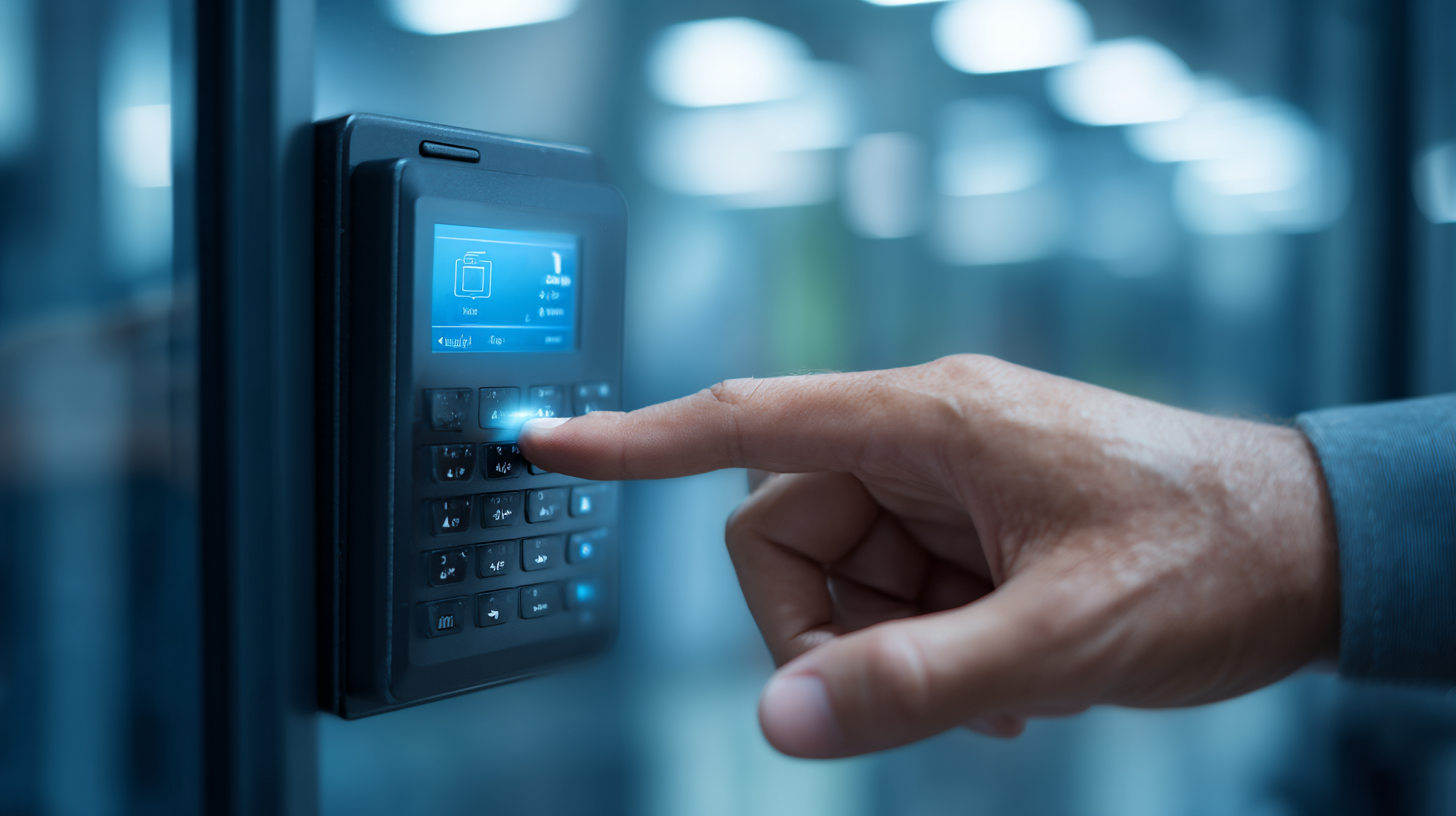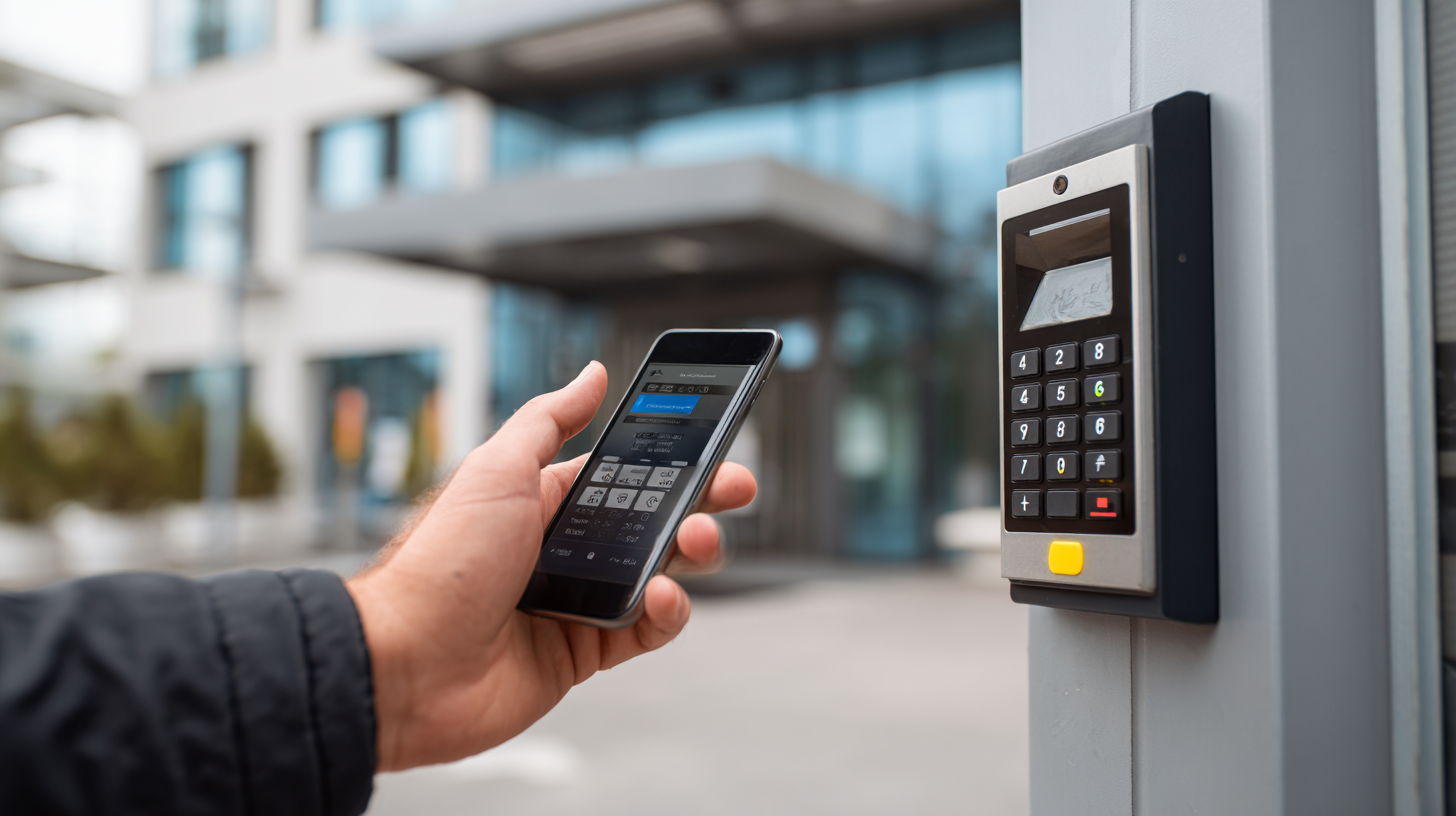5 Digital Trends Driving the Adoption of Cellular Access Control in Modern Security Systems
In an age where security is a paramount concern for both businesses and individuals, the integration of technology in access control systems has witnessed unprecedented growth. According to a recent report by MarketsandMarkets, the global market for access control systems is projected to reach $10.25 billion by 2025, with cellular access control emerging as a key player in this evolution. The adoption of cellular access control is driven by the need for enhanced flexibility, cost-effectiveness, and real-time monitoring capabilities.
Moreover, a study by Security Magazine highlights that over 30% of security professionals are incorporating cellular connectivity into their systems to improve operational efficiency.
As organizations continue to prioritize agile security solutions that can adapt to rapidly changing environments, understanding the digital trends propelling the adoption of cellular access control becomes essential for safeguarding assets and ensuring safety.

The Rise of Cellular Technology in Security: A Market Overview
The global smart home security market is experiencing significant growth, driven by advancements in technology and an increasing demand for integrated security solutions. As of 2024, the market was valued at approximately USD 33.94 billion, and projections indicate it will reach a remarkable USD 82.07 billion by 2030. This impressive growth is largely attributed to the rising popularity of AI-powered surveillance systems and IoT-enabled monitoring devices, which enhance both security and convenience for consumers.
Central to this evolution is the rise of cellular technology, which provides reliable connectivity for smart security devices. The market for wireless home security cameras alone is expected to grow from USD 9.8 billion in 2024 to USD 37.5 billion by 2034, reflecting a compound annual growth rate (CAGR) of 13.6%. Cellular access control systems are gaining traction as they offer robust security features, including real-time monitoring and remote management capabilities, aligning with the growing trend towards smart home automation and remote security management.

Understanding the Impact of 5G on Cellular Access Control Efficiency
The advent of 5G technology is significantly transforming cellular access control systems within modern security frameworks. With its enhanced bandwidth and reduced latency, 5G facilitates real-time data processing, enabling quicker decision-making in security responses. According to industry reports, 5G networks are projected to support up to one million devices per square kilometer, a leap that allows for a more comprehensive integration of IoT devices into security systems. This capability not only improves efficiency but also strengthens the overall security infrastructure by enabling seamless communication between access control devices and centralized management systems.
Moreover, the integration of 5G with SD-WAN (Software-Defined Wide Area Network) and SASE (Secure Access Service Edge) enables organizations to optimize their connectivity while concurrently ensuring robust security measures. This synergy is crucial, given the rise in cybersecurity threats and the increasing complexity of enterprise networks. Reports indicate that organizations deploying these technologies can achieve up to 30% reductions in bandwidth costs and improve network performance and reliability. The impact of 5G on cellular access control efficiency is thus profound, heralding a new era in security technology that aligns with the evolving demands of the digital landscape.
Impact of 5G on Cellular Access Control Efficiency
Operational Advantages of Cloud-Based Access Control Systems
The shift towards cloud-based access control systems is revolutionizing security protocols across various industries. One of the primary operational advantages of these systems is the centralized management they offer. With cloud technology, security administrators can monitor and control access from anywhere in the world. This flexibility not only enhances the ability to respond quickly to security incidents but also simplifies the process of updating permissions and accessing reports. As a result, organizations can maintain tighter security without the complexity of managing multiple physical servers.
Additionally, cloud-based access control systems provide significant cost savings. By minimizing the need for on-premises hardware and reducing maintenance expenses, businesses can allocate resources more efficiently. Subscription-based pricing models allow organizations to scale their security solutions according to changing needs without heavy initial investments. This financial viability, combined with robust security features such as real-time alerts and advanced user analytics, makes cloud-based systems an attractive option for modern security needs.
5 Digital Trends Driving the Adoption of Cellular Access Control in Modern Security Systems - Operational Advantages of Cloud-Based Access Control Systems
| Trend |
Description |
Operational Advantage |
Impact on Security |
| Increased Mobile Access |
Users can access their systems remotely via mobile apps. |
Convenience and flexibility for users. |
Enhanced situational awareness. |
| Integration with IoT Devices |
Access control systems can integrate seamlessly with IoT technology. |
Streamlined operations and better data collection. |
Improved real-time monitoring and response. |
| Cloud-Based Management |
Control systems managed through cloud platforms. |
Reduced infrastructure costs. |
Scalable security solutions. |
| Data Analytics |
Utilizing analytics for understanding access patterns. |
Enhanced decision-making based on data. |
Proactive threat management. |
| Enhanced User Authentication |
Adoption of multi-factor authentication for increased security. |
Reduction in unauthorized access. |
Strengthened overall system security. |
Security Benefits: Enhancing Data Protection Through Cellular Networks
The integration of cellular networks into access control systems is revolutionizing security measures across various sectors. A report by MarketsandMarkets indicates that the global market for cellular access control is projected to grow at a CAGR of 17.8% from 2021 to 2026, propelled by the demand for enhanced data protection. Cellular technology offers a more resilient communication platform compared to traditional wired systems, significantly reducing vulnerabilities associated with physical breaches and tampering.
 Moreover, the use of cellular networks enhances the security of transmitted data. According to a study by the Electronic Frontier Foundation, encrypting data over cellular networks can reduce the risk of interception by up to 90%, making it a critical component for businesses handling sensitive information. By leveraging cellular technology, organizations can ensure secure, real-time monitoring and control of access points, which is particularly vital in high-stakes environments such as financial institutions and government facilities. With the growing trend of remote management in security systems, cellular access control not only enhances protection but also streamlines operations, showcasing its importance in modern security frameworks.
Moreover, the use of cellular networks enhances the security of transmitted data. According to a study by the Electronic Frontier Foundation, encrypting data over cellular networks can reduce the risk of interception by up to 90%, making it a critical component for businesses handling sensitive information. By leveraging cellular technology, organizations can ensure secure, real-time monitoring and control of access points, which is particularly vital in high-stakes environments such as financial institutions and government facilities. With the growing trend of remote management in security systems, cellular access control not only enhances protection but also streamlines operations, showcasing its importance in modern security frameworks.
User Experience Enhancements: Streamlined Access Management in Real-Time
The integration of
user experience enhancements
in identity and access management (IAM) systems is becoming crucial as organizations seek
more streamlined access management solutions in real time. According to estimates, the IAM market
was valued at approximately $18.64 billion in 2023,
with predictions indicating a compound annual growth rate (CAGR) of
12.55% from 2024 to 2031. This growth underscores
the increasing demand for efficient access control mechanisms that not only
improve security but also minimize friction for users.
As cellular access control technologies advance, they offer innovative features that significantly
enhance user experience. Real-time access management capabilities are now a standard expectation,
allowing organizations to efficiently manage permissions and monitor user activities seamlessly.
The evolving landscape prompts security systems to not only prioritize protection but also the
usability of access management processes, aligning with the broader market trends and user expectations.
Organizations that harness these digital trends will be better positioned to provide a
secure yet user-friendly environment.



 Moreover, the use of cellular networks enhances the security of transmitted data. According to a study by the Electronic Frontier Foundation, encrypting data over cellular networks can reduce the risk of interception by up to
Moreover, the use of cellular networks enhances the security of transmitted data. According to a study by the Electronic Frontier Foundation, encrypting data over cellular networks can reduce the risk of interception by up to